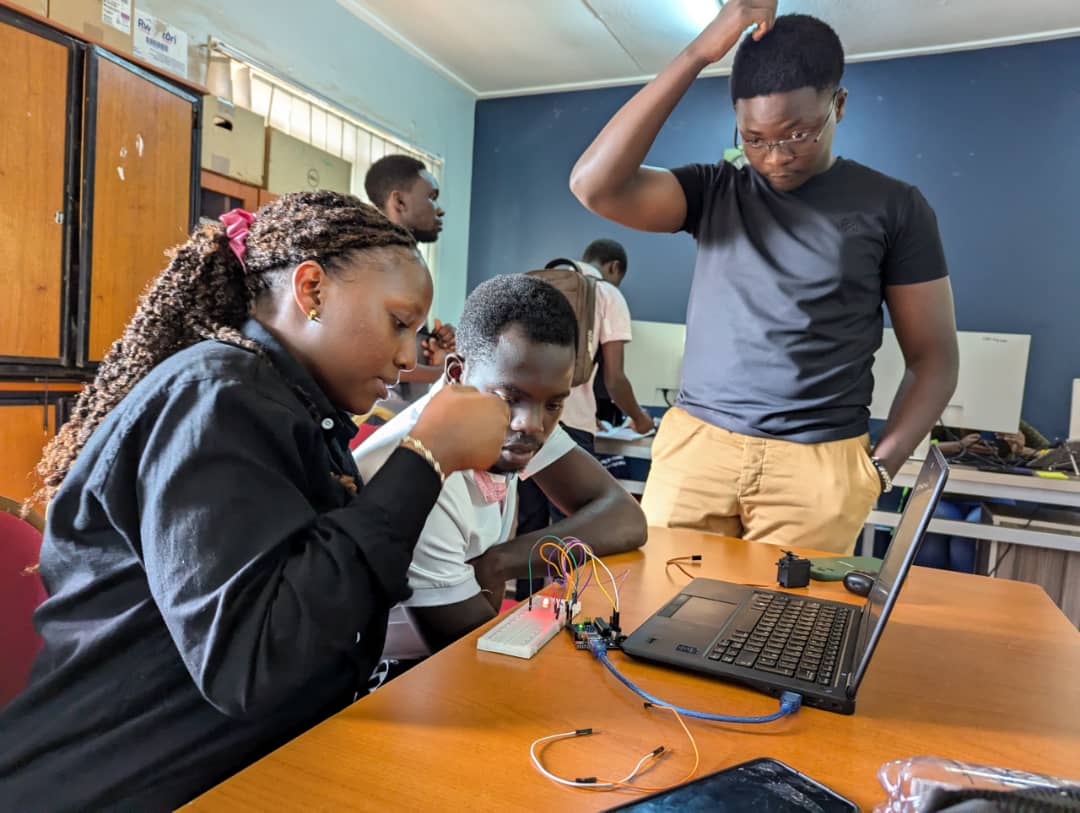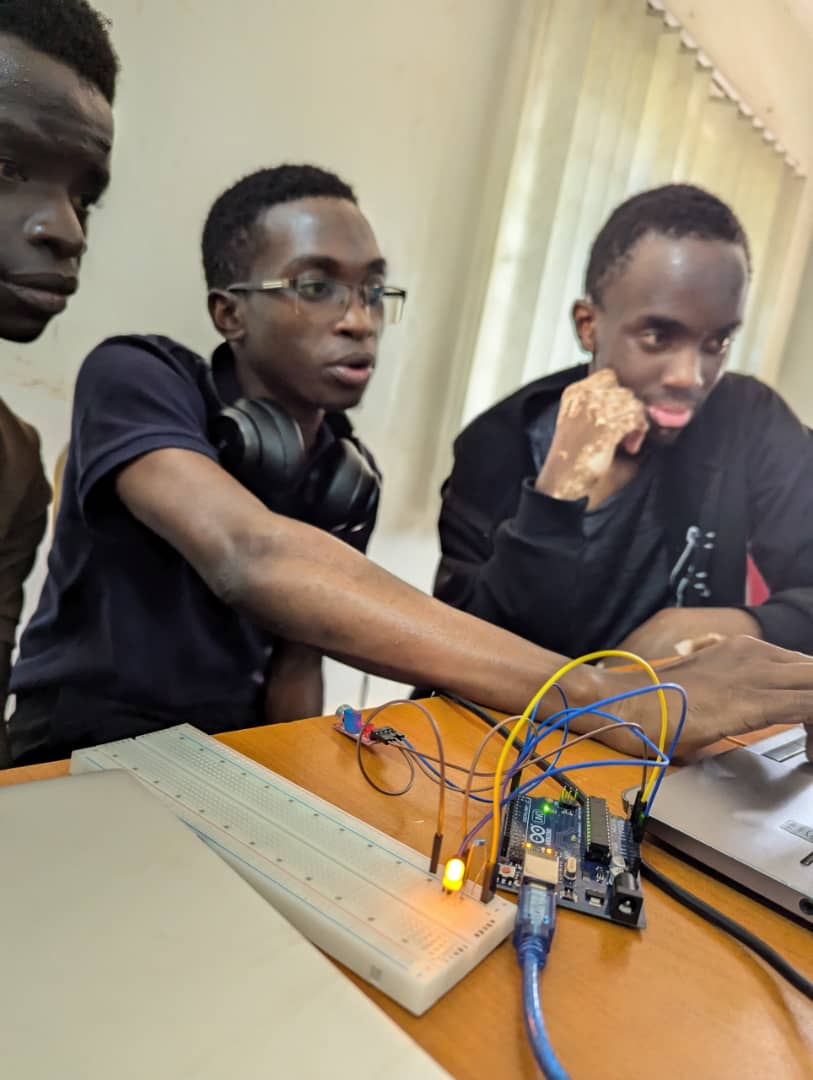
Last Friday, the Robotics and AI Chapter at Uganda Christian University held a dynamic and hands-on chapter session that showcased the practical applications of robotics in everyday life. Led by the chapter president, Atwine Tirzah, and general secretary, Nansubuga Diana, this session brought students closer to the world of robotics by focusing on one simple yet powerful concept: controlling LEDs and a servo motor with sound.
The session was packed with practical demonstrations, real-world examples, and interactive discussions, making it a memorable learning experience for both novice and advanced participants. The goal was not just to educate, but to inspire the next generation of roboticists to think beyond conventional applications.
The Sound Module Demonstration
At the core of the session was the sound module, a device designed to detect sound waves and trigger specific actions. The system used in the demonstration consisted of two LED lights and a servo motor, all connected to an Arduino board. The logic behind this system was simple yet fascinating: the lights would alternate based on sound detection.
If the environment was silent, one LED remained off while the other stayed lit. However, the moment any sound was made—whether a clap, tap, or any other form of noise—the system responded immediately. The lights would switch states, and as an added feature, the servo motor would rotate for a few seconds, simulating a mechanical movement.
This demonstration opened up a world of possibilities for the participants. The concept, while seemingly basic, is a building block for more complex systems like automated lighting. Imagine walking into a room, clapping your hands, and having the lights turn on automatically. This type of automation is becoming increasingly popular in smart homes, providing energy efficiency and convenience.

The hands-on nature of the session allowed students to get deeply involved in the process, wiring the components themselves and understanding the code behind the system. It wasn’t just about watching the instructors work; it was about actively participating, experimenting with different inputs, and seeing the immediate results.
Real-World Applications and Practical Insights
As we dove deeper into the session, it became clear that this simple sound-based system had numerous practical applications in everyday life. We discussed how sound sensors could be used to develop security systems that detect unusual sounds like glass breaking or doors slamming, alerting homeowners to potential dangers.
Moreover, we explored smart home automation, where systems like this could be adapted to control everything from lights to appliances, all based on sound inputs. In future sessions, we plan to introduce even more complex sensors, integrating motion detection and environmental monitoring to show just how much robotics can impact our daily lives.
A particularly engaging moment was when a participant raised a thoughtful question: “What if there’s a party at home with lots of clapping? Would the lights keep going on and off?” This sparked a rich discussion on the importance of designing systems with override options or manual controls to ensure functionality in different environments.
We explained that in any robotics project, it is essential to anticipate real-world scenarios and design systems that allow for flexibility. In the case of a party, for instance, the system would need a manual switch or a more sophisticated way of distinguishing between sounds intended to trigger actions and background noise.

Building a Community of Innovators
This session wasn’t just about mastering the technical aspects of robotics—it was about cultivating a community of innovators. Through interactive discussions, students were encouraged to share their own ideas on how robotics could be applied in agriculture, healthcare, education, and even entertainment. The beauty of robotics lies in its potential to transform a wide range of industries, and the students were inspired to think big.
Under the leadership of Atwine Tirzah and Nansubuga Diana, the chapter has grown into a hub of creativity and learning, where students can explore their interests, collaborate on projects, and push the boundaries of what is possible with technology.

The session concluded with participants reflecting on the potential of sound-based control systems. Many were excited to experiment further, and there was palpable excitement about future chapter sessions. There was also a reminder that robotics is not just about building machines but about solving real-world problems. This mindset shift is one of the key goals of the Robotics and AI Chapter.
A Bright Future Ahead
Looking ahead, the Robotics and AI Chapter is committed to hosting more sessions like this one—sessions that combine technical skills with creative problem-solving. Future sessions will explore more advanced topics, such as integrating artificial intelligence with robotics, using sensors for environmental monitoring, and designing robots that can interact with humans in meaningful ways.
Under Tirzah and Diana’s leadership, the chapter is not just a place to learn but a place to innovate and inspire. Each session builds on the last, equipping students with the knowledge, skills, and confidence to take on more complex challenges in the field of robotics and artificial intelligence.

Stay tuned for more exciting chapter sessions, where we continue to illuminate the path for the next generation of roboticists and AI enthusiasts. The future is bright, and it’s powered by the innovators at Uganda Christian University’s Robotics and AI Chapter!


